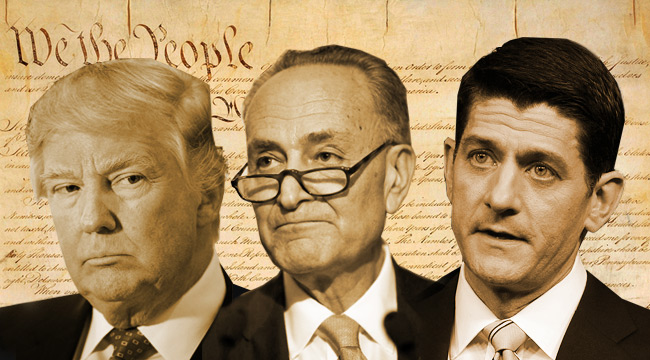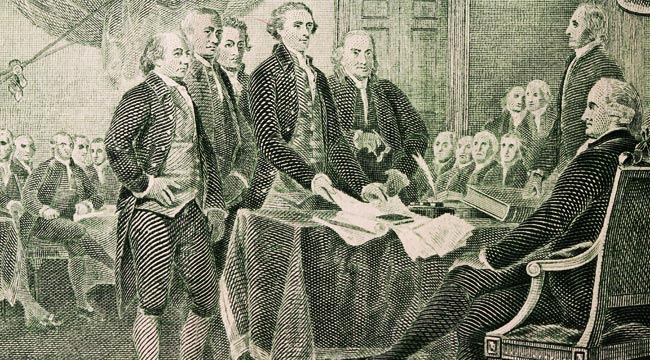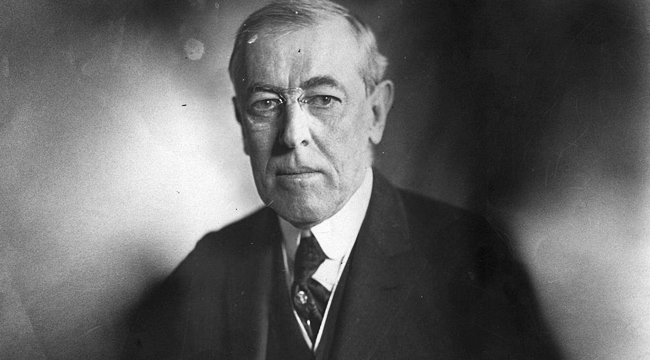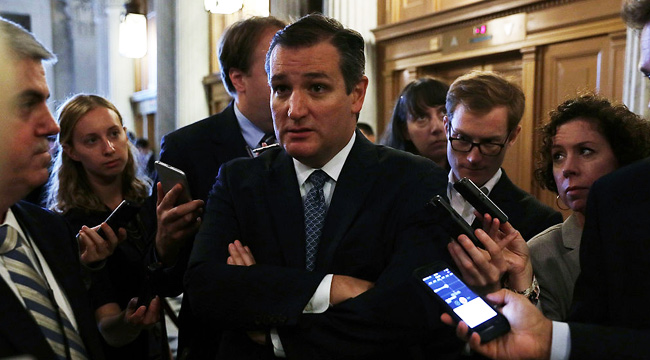
You don’t need to look very hard to see the kinds of problems facing this country today. Issues range from a broken healthcare system, faulty cybersecurity, a changing climate, mass shootings, and politicians that seem more beholden to corporate donors than their own constituents — and that’s just to name a few. Worse yet, these problems loom large without any clear, workable solutions on the horizon.
These problems aren’t going anywhere on their own, they have another thing in common: none of them are mentioned in our nation’s constitution. While we often look to our governing bodies to mobilize and help put real solutions in place, the staunch partisanship of today’s politicians makes passing new laws difficult to achieve.
As difficult as it has proven itself to be in recent years, passing legislation is a breeze when compared to the overwhelmingly difficult task of amending our constitution.
Even at its inception, the authors of our government how-to acknowledged that they wouldn’t be able to address every issue that would come to face our newly formed country, so in order to keep the constitution relevant in an ever-changing world, they added the option to change it via constitutional amendments into its framework, known as Article V.
The Origins Of The Amendment
There have been more than 11,000 amendments proposed in the 220-plus-year history of our government. Of those, a mere 27 are currently part of the Constitution — and ten of those came during the ratification of the constitution itself, more commonly known as the Bill of Rights.

While some of these amendments are the framework of our most sacred values, such as the First Amendment, which guarantees freedom of speech, the press, and peaceful assembly. Others, like the Second Amendment, are more controversial, due to its dubious wording as well as a dramatic change what firearms are capable of.
Others, like the Third Amendment, which prohibits any citizen from being forced to have a soldier stay in their home, is a relic dating back to the Revolutionary War. And with no real contemporary application, it remains one of the least-cited amendments to this day.
The most recent Constitutional Amendment came back in 1992, when Congress ratified a rule involving their pay raises, which was first proposed back in 1789, and remains an unintentional commentary on the speed and efficiency that government is known for. Prior to that, the 26th Amendment certified the voting age as 18 back in 1971.
The real problem lies in the mechanics of ratifying an amendment, either by a two-thirds majority vote in both the House of Representatives and the Senate, or by a constitutional convention called for by two-thirds of the State legislatures (a method that’s never been utilized). If it makes it through one of these options, it still needs to be ratified by three-forths of the States themselves. In short, it takes two extreme supermajorities before something becomes a ratified Constitutional Amendment.
It’s worth noting that the Founders’ vision for America wasn’t as ambitious as the one we got. The notion of ‘Manifest Destiny’ didn’t take hold until the mid-1800s, resulting in a massive, diverse nation which has made the process of amending the constitution that much more difficult. To look at it in today’s terms, the late Supreme Court Justice Antonin Scalia once calculated that it would take less than 2% of the population to dissent to completely derail a constitutional amendment. Upon this finding, the justice (a strict Constitutionalist) was quoted as saying amending the constitution should be “hard, but not that hard.”
The Constitution As A Living Document

The idea of the Constitution as a living document came about around the time of the Industrial Revolution, and was first referred to in 1908 by Woodrow Wilson in his book Constitutional Government in the United States, where he compared political constitutions with a need to be “Darwinian in structure and in practice.” He furthered this line of thinking four years later during his 1912 Presidential campaign, where he said that the constitution, like the society it serves, must be treated like a living, evolving document, and that it “falls, not under the theory of the universe, but under the theory of organic life.”
There are two schools of thought that tie-in to the Constitution being a living document. The first is Judicial Pragmatism, which believes that the Constitution should evolve out of basic social necessity. The other is Original Intent, which believes that the Constitution was written specifically to evolve over time. While both branches believe in the ability to amend the Constitution, given the unwieldy process it involves, they tend to favor reinterpretation of the text as a way of addressing contemporary issues facing the country.
In opposition to the living document line of thinking is Constitutional Originalism, a theory that takes the document strictly at its word, as a legal document. They believe everything not covered in its language is best left up to the states, and anything that is not expressly covered should be covered by the process of amendment.
Given the difficulty in making those amendments happen, more and more often the responsibility now tends to fall on the Supreme Court to interpret new laws out of the existing constitutional text, having changed laws on everything from campaign finance to gun rights to gay marriage.
The issue here is that, as our society continues to grow and evolve, every aspect of our life is forced to evolve along with it, and yet we’re expected to rely on new and different interpretations of how to govern under these changing circumstances by referring back to a static document that in many ways is no longer equipped to handle the complexities of everyday life.
The Challenge Of Bipartisanship

Sadly, the main goal of each of our political parties seems to be absolute opposition as a means of gathering more power as opposed to compromise. As a result, most proposed amendments are done simply as political theater; grandiose gestures meant to symbolize a politician’s outlook while knowing full well it’ll never become part of the constitution.
Most recently, Senator Ted Cruz (R-Texas) and Representative Ron DeSantis (R-Florida) have proposed an Amendment that would limit Congressional terms. The proposal piggybacks on President-Elect Donald Trump’s campaign slogan to “drain the swamp,” and was outlined in the plan for his first 100 day in office. Cruz and DeSantis believe that creating term limits would, theoretically, end the notion of career politicians, something they believe the Founding Fathers would’ve been fundamentally opposed to.
The Hill has noted that similar measures were put forth in the late 1990s and in 2012 that went nowhere, much like this one is expected to. Especially since Senate Majority Leader Mitch McConnell (R-Kentucky) immediately threw cold water on that aspect of Trump’s plan, stating “I would say we have term limits now, they’re called elections.”
So what’s the obvious solution? The idea of holding another Constitutional Convention 230 years after our first one isn’t feasible, nor is the option to gut Article V from our current Constitution in favor of something more expedient (whatever that would be). The easiest solution is the one that requires the biggest suspension of disbelief: cross-party cooperation on a collection of third-rail issues. Even if you assume that every politician wants to solve these problems, there are huge differences of opinion on not only how to solve it, but where the responsibility in solving even lies.
So, without being left any clear path to resolution, increased partisanship means we’ve effectively locked ourselves out of our own governing document, and forced ourselves into a vicious cycle where the depth of our problems and a caustic political climate makes it impossible to fix those problems or that climate. Welcome to America in 2017.
